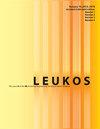照明感官评价:方法论试点
IF 2.6
2区 工程技术
Q2 CONSTRUCTION & BUILDING TECHNOLOGY
引用次数: 1
摘要
当前的光环境标准是基于技术要求,如亮度、均匀性和照度,并不一定描述光体验的所有部分,以确保从用户的角度来看视觉舒适。包括与经验相关的要求很可能会产生更好的照明舒适度。要做到这一点,就需要新的方法来指定和衡量用户体验。本文描述了一项试点研究,该研究探索了一种新的方法,通过使用训练有素的人类面板来分析评估感知照明特性,从而使人类评估更加客观。该方法建立在已建立的感官方法上,其中人类感官用于产品评估,传统上应用于食品,包装和汽车行业。一个由八名符合特定选择标准的人员组成的分析小组被招募并接受培训,在一个多感官实验室评估照明产品。结果表明,小组成员能够通过区分属性和产品来评估照明。在感官和物理特性(如可读性和眩光)方面,不同灯具之间存在显著差异。最后,分析感官方法可以应用于照明,以非主观的方式评估灯具。然而,物理和感官属性并不总是共同变化,这表明物理和感官测量方法的数据提供了关于光质量的互补信息。反过来,这些知识可以应用于支持照明设计和采购中不同专业之间沟通的工具,以促进从最终用户角度来看既节能又理想的光环境。本文章由计算机程序翻译,如有差异,请以英文原文为准。
Sensory Evaluation of Lighting: A Methodological Pilot
ABSTRACT Current standards for light environments are based on technical requirements, e.g. luminance, uniformity, and illuminance, and do not necessarily describe all parts of the light experience to ensure visual comfort from a user perspective. Including experience-related requirements would most likely yield better lighting comfort. To do that, new methods for specifying and measuring the user experience are needed. This paper describes a pilot study exploring a new method to analytically assess perceived lighting properties by using a trained human panel and thus make human assessments more objective. The methodology is built on established sensory methods, where the human senses are used in product assessments, traditionally applied within e.g. the food, packaging, and car industries. An analytical panel comprising eight persons fulfilling specific selection criteria were recruited and trained to assess lighting products in a multi-sensory laboratory. The results show that the panelists were able to assess lighting by distinguishing between attributes and products. Significant differences were identified between the different luminaires, both in terms of sensory and physical properties, e.g. readability and glare. Conclusively, analytical sensory methods can be applied to lighting to assess luminaires in a non-subjective way. Physical and sensory attributes do not, however, always co-vary, which shows that data from physical and sensory measuring methods provide complementary information about light quality. This knowledge may in turn be applied in tools supporting the communication between different professions in lighting design and procurement to promote light environments that are both energy efficient and desirable from an end-user perspective.
求助全文
通过发布文献求助,成功后即可免费获取论文全文。
去求助
来源期刊

Leukos
工程技术-光学
CiteScore
7.60
自引率
5.60%
发文量
19
审稿时长
>12 weeks
期刊介绍:
The Illuminating Engineering Society of North America and our publisher Taylor & Francis make every effort to ensure the accuracy of all the information (the "Content") contained in our publications. However, The Illuminating Engineering Society of North America and our publisher Taylor & Francis, our agents, and our licensors make no representations or warranties whatsoever as to the accuracy, completeness, or suitability for any purpose of the Content. Any opinions and views expressed in this publication are the opinions and views of the authors, and are not the views of or endorsed by The Illuminating Engineering Society of North America and our publisher Taylor & Francis. The accuracy of the Content should not be relied upon and should be independently verified with primary sources of information. The Illuminating Engineering Society of North America and our publisher Taylor & Francis shall not be liable for any losses, actions, claims, proceedings, demands, costs, expenses, damages, and other liabilities whatsoever or howsoever caused arising directly or indirectly in connection with, in relation to, or arising out of the use of the Content. Terms & Conditions of access and use can be found at http://www.tandfonline.com/page/terms-and-conditions .
 求助内容:
求助内容: 应助结果提醒方式:
应助结果提醒方式:


